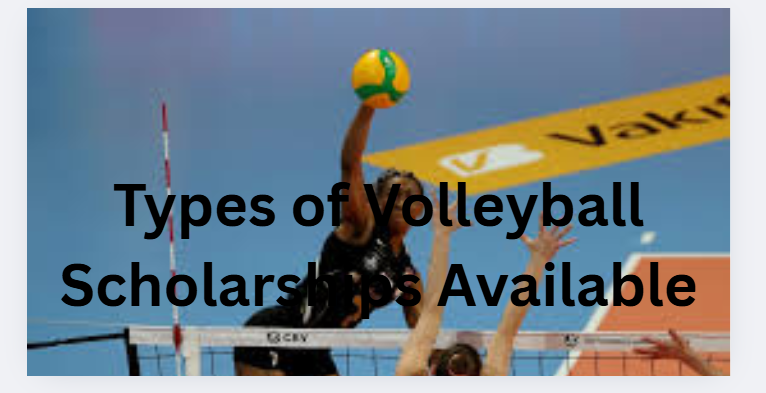For talented female volleyball players, a college scholarship can be the golden ticket to higher education—without the crushing burden of student debt. But with so many athletes competing for limited spots, how do you stand out?
This guide breaks down everything you need to know: where to find volleyball scholarships, what coaches look for, and how to maximize your chances of securing financial aid for college.
Why Pursue a Volleyball Scholarship?
Playing volleyball at the collegiate level isn’t just about the sport—it’s an opportunity to grow academically and athletically while earning financial support. Here’s why it’s worth it:
- Tuition Coverage: Scholarships can cover partial or full tuition, room, and board.
- Elite Training: College programs offer top-tier coaching and competition.
- Academic & Career Benefits: Balancing sports and studies builds discipline, time management, and teamwork—skills employers love.
- Networking: You’ll connect with coaches, scouts, and teammates who can help in future career moves.
Types of Volleyball Scholarships Available

Not all scholarships are the same. Here’s a breakdown of the main types:
NCAA Division I & II Scholarships
- Full-ride scholarships (D1): Rare but available for elite players.
- Partial scholarships (D2): More common, covering a percentage of costs.
NAIA & Junior College (JUCO) Opportunities
- NAIA schools offer athletic scholarships and often have more flexible eligibility rules.
- JUCOs are a great pathway to later transfer to a four-year program.
Academic & Need-Based Scholarships
Even if you don’t land a full athletic scholarship, strong grades can unlock additional aid.
Private & Club Scholarships
Organizations like the AVCA (American Volleyball Coaches Association) and local clubs sometimes offer financial awards.
Top Colleges Offering Volleyball Scholarships for Women

Some of the best programs for female volleyball athletes include:
- Stanford University (NCAA D1) – Known for both elite athletics and academics.
- University of Nebraska (NCAA D1) – A powerhouse with a strong fan base.
- University of Texas at Austin (NCAA D1) – Competitive program with great facilities.
- Brigham Young University (NCAA D1) – Offers strong athletic and academic support.
- University of Tampa (NCAA D2) – A top D2 program with scholarship opportunities.
Smaller schools and NAIA programs also provide great opportunities, often with more playing time early on.
What College Coaches Look For in Recruits
Coaches don’t just want skilled players—they want athletes who fit their team culture. Here’s what gets their attention:
Strong Athletic Performance
- Consistent stats (kills, digs, blocks, serve accuracy)
- Club and high school experience
- Highlight reels that showcase versatility
Academic Readiness
- Minimum GPA and test scores (NCAA requires a 2.3+ GPA for D1/D2)
- Core course completion
Coachability & Team Fit
- Leadership on and off the court
- Positive attitude and work ethic
- Ability to adapt to different play styles
Visibility in Recruiting Events
- Attending elite camps and showcases
- Reaching out to coaches proactively
How to Get Noticed by College Coaches
If you’re serious about earning a scholarship, you need a game plan. Here’s how to get on a coach’s radar:
1. Create an Athletic Resume & Highlight Video
- Include stats, positions, awards, and academic achievements.
- Keep your highlight reel under 3 minutes, showing your best plays.
2. Attend Exposure Camps & Tournaments
- College scouts frequent events like AAU Nationals and USAV Junior Nationals.
- Research which camps your target schools attend.
3. Contact Coaches Early
- Email coaches with your stats, video link, and tournament schedule.
- Follow up—don’t wait for them to reach out.
4. Leverage Social Media & Recruiting Platforms
- Post game clips on Instagram/Twitter and tag coaches.
- Use platforms like NCSA, SportsRecruits, or FieldLevel.
5. Excel in the Classroom
- A strong GPA makes you a more attractive recruit.
- Some scholarships require academic benchmarks.
Common Mistakes to Avoid
Many talented players miss out on scholarships because of avoidable errors. Steer clear of these pitfalls:
- Waiting Too Long to Start Recruiting – Begin reaching out to coaches by sophomore/junior year.
- Poor Highlight Videos – Low-quality footage or too much filler hurts your chances.
- Ignoring Smaller Schools – D2, D3, NAIA, and JUCO programs can offer great opportunities.
- Neglecting Academics – Failing core classes can disqualify you from NCAA eligibility.
Final Tips for Securing Your Scholarship
- Be Proactive: Don’t wait for scouts to find you—reach out, attend camps, and market yourself.
- Stay Realistic: Only a small percentage get full rides—apply for multiple scholarships.
- Keep Improving: Even after committing, coaches notice players who keep developing.
Next Steps
If you dream of playing college volleyball, start today. Research schools, update your highlight reel, and email coaches. With dedication and the right strategy, you could be on your way to a scholarship that changes your future.
Ready to take action? Begin your recruiting journey now and spike your way to success!
